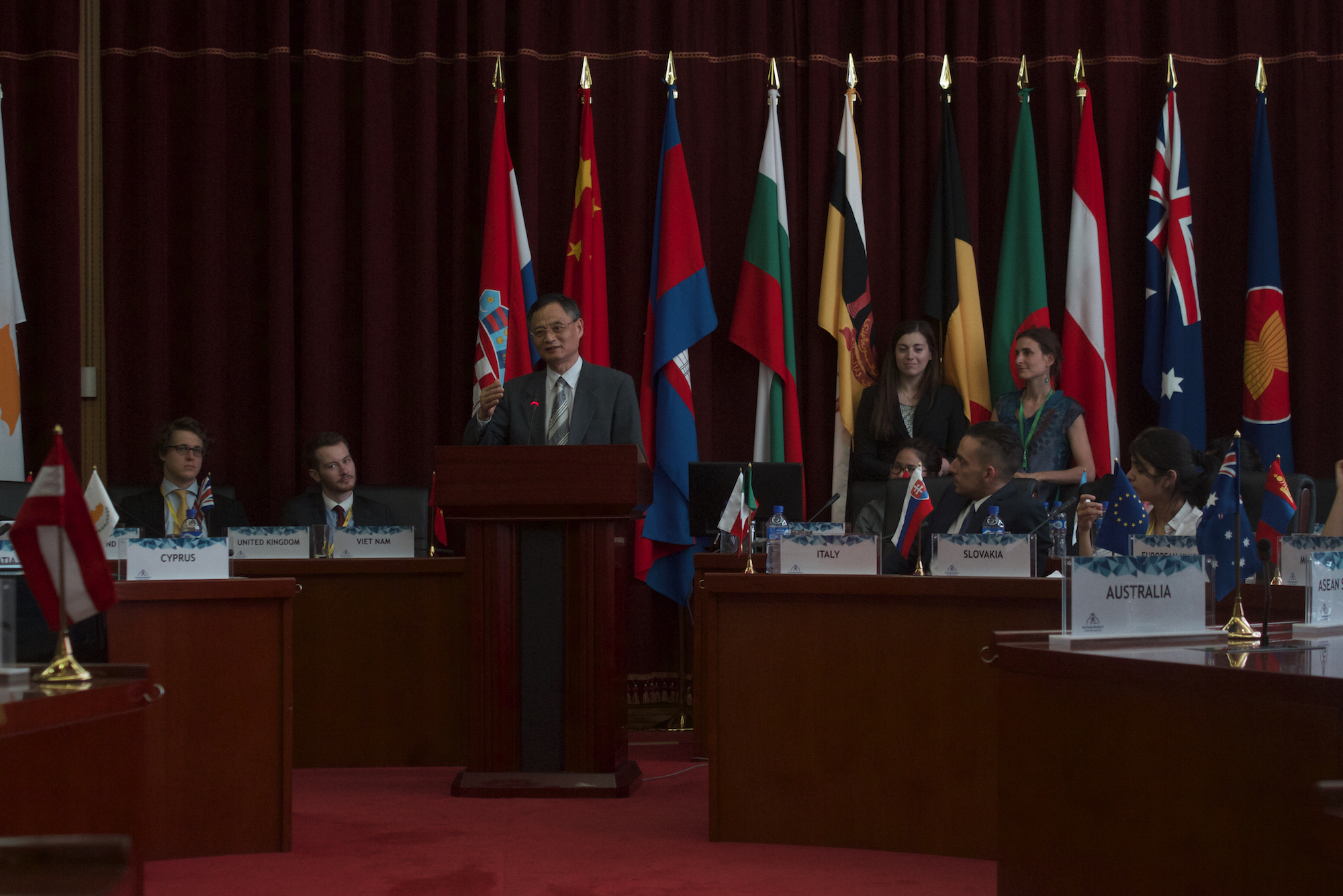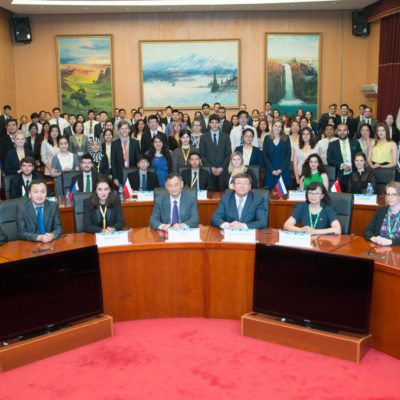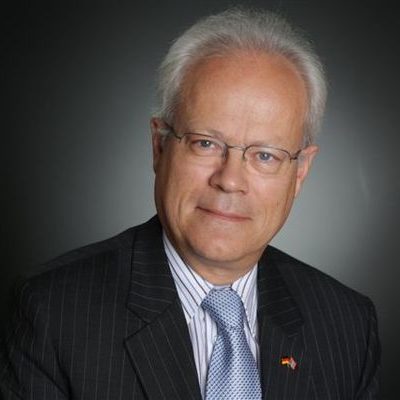Text and Photos By Anna Valmero
In today’s connected world, skills in diplomacy and communications are essential for young leaders and change makers to participate and share ideas in discourses aimed to solve issues of global scale and impact, diplomacy experts said.
During the plenary session at the 7th Model Asia-Europe Meeting (ASEM), top academicians and practitioners in the field of diplomacy tackled how students should harness opportunities, including informal negotiation type of meetings of #ModelASEM events to learn and practice their diplomacy skills to truly connect and arrive at potential avenues for regional cooperation or mutual support for an idea, an action, or a cause.
Patterned after the regular ASEM meetings attended by country leaders and representatives, the three-day #ModelASEM gathers student representatives from 51 members of the ASEM body to attend simulations of multilateral diplomatic meetings and deliberations that discuss the two regions’ shared political, socio-economic, and cultural agenda.
While ASEM meetings are informal, it is this very nature that makes it “powerful and innovative,” said Ambassador Luvsantseren Orgil, ASEM Senior Official for Mongolia who sat among the panel of experts, because it is not limited by rigid structures like in high-level UN meetings.
The ambassador said, “The informality of the [ASEM] process does not affect the commitment of diplomats” to work out solutions under a common and mutually beneficial outcome.
In an ideal world, negotiations are done quick and smoothly. But reality is much more complicated as countries involved have their own interests and varying values and even cultural differences.
“To overcome difference, be curious and be genuinely interested to learn another culture or another person’s perspective. I found this useful in my job,” said Orgil.
The ASEM is composed of 51 nations–each with diverse cultural backgrounds, socio-economic themes and political interests–comprising 62% of today’s global population.
“Diversity is the art of thinking independently together. It lies at the heart of our program at Model ASEM since it started eight years ago,” Dr. Yu Fei, ASEF University Alumni Network (ASEFUAN).
Through model simulations of multilateral meetings, students learn by practice and that is important. Studying books and learning concepts from traditional lectures are not enough, said. Marco FERRI, Minister Counsellor, Political Section Delegation of the European Union to China.
Future connectivity
To fortify partnerships between the two regions, Asia and Europe can look into three things: infrastructure development, policy, and social media engagement, said Dr. Katharina Hone, trainer and lecturer at DiploFoundation, a nonprofit that trainings global leaders on governance and international policy making.
“How can Asia and Europe coordinate? Through infrastructure development projects that foster and benefit regional cooperation instead of creating divisions due to the short-term view of competition between countries, through policy development forged through dialogue that is inclusive for all, and through digital connectivity by way of social media, which more diplomats must explore to get the pulse of their constituents and to promote exchange of best practices with counterparts around the world,” said Hone.
Hone noted the need to highlight multilingualism “so as not to forget or leave out other languages” even while the diplomatic circle uses English as its lingua franca.
In an interview with Orange Magazine, Ambassador and ASEF executive director Zhang Yan said the model ASEM highlights the value of experiential learning for students and youth leaders in terms of simulating ASEM meetings that tackle regional issues and national interests of each ASEM member state.
“ASEM provides a platform for informal and open dialogue between ASEM members to discuss issues affecting their country and the region. While there is no strict agenda as ASEM highlights the value of free-wheeling discussions, the discourse and cooperation that comes from these meetings are ripe with lessons learned and shared by countries in the political, socio-economic, and cultural spheres,” said Yan.
ASEM engages partners in informal dialogue to strive for a sustainable future and these very ideals of openness to a diversity of ideas is what we want to pass on to the next leaders of tomorrow through the experiential lessons at Model ASEM, explained Mongolian Minister for Foreign Affairs Lundeg Purevsuren.
“Asia matters for Europe and Europe matters for Asia. The need for collaboration is ever more pressing to face [today’s] common challenges,” said Purevsuren.







